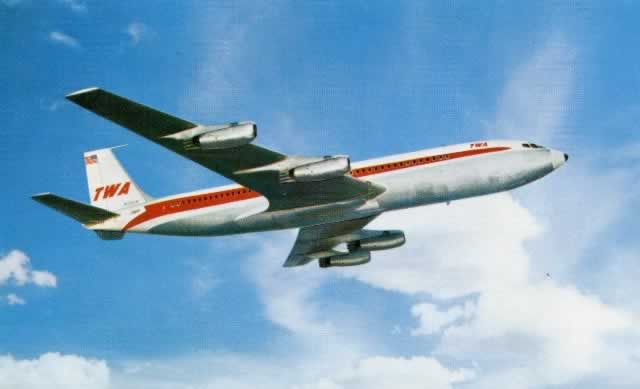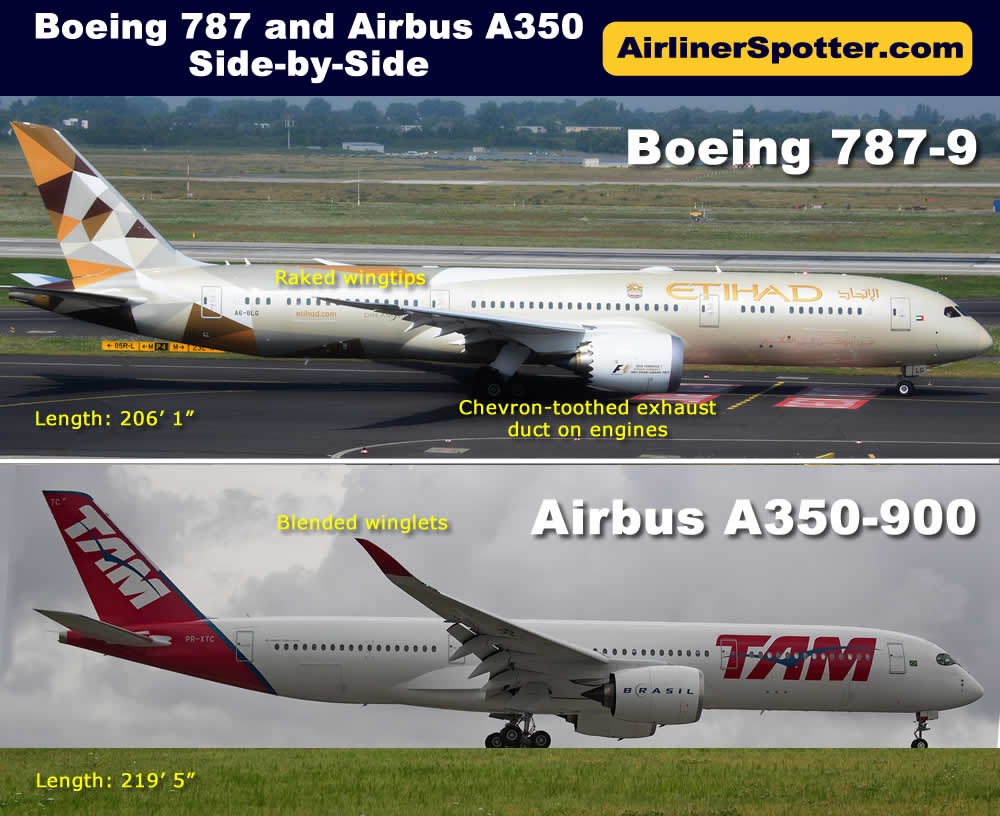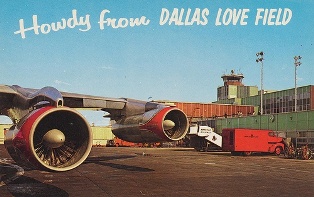Commercial Airliners
|
 |
With the wide variety of airliners serving the worldwide travel market today, identification of individual aircraft manufacturers and planes can be a bit tricky.
Included on our new website www.AirlinerSpotter.com are guides to spotting and identifying the common airliners of today.
This website provides identification guides and recognition tips for comparing the airliners of the major companies engaged in aviation manufacturing today: Boeing, Airbus, Embraer, Antonov and others.
The key to telling airplanes apart is attention to the details, e.g., number of engines, windshield design, landing gear configurations, engine placement, shape of the nose and tail design.
Side-by-side comparison charts of airplane differences and photographs help identify airliner manufacturer, individual models, and unique design characteristics.
Charts focus on how to tell planes apart, by comparing engine placement, windshield arrangement, landing gear configuration, entry doors, tailfin design, winglets and other distinguishing characteristics.
A good starting point is our Airliner Spotting Guide.
See you at the end of the runway!
Modern Day Airliners
Airliner resources at our other website: |
|
Boeing Commercial Jet Airliners Bombardier Q-400 / De Havilland Dash 8-400 |
Airbus Commercial Jet Airliners McDonnell-Douglas MD-80 and MD-90 McDonnell-Douglas DC-10, MD-10, and MD-11 |
Propliners of the Past
 |
Today we are accustomed to travel in "the jet age" ... but prior to the 1950s all of the airlines of world depended on propliners as the mainstays of their fleets.
A series of improvements over the years led the industry from the DC-3 to the DC-7, Electra, Constellation and other propeller-based airliners.
Seen on this page are images of those early propliners, and airlines that still exist, such as American, Delta and United.
Also included are images from airlines that have been engulfed in takeovers, and victims of bankruptcy and changing times: Northwest, Eastern, National, Pan American and Trans Texas.
Jetliners of the Past
|
The jet age of passenger travel began in the late 1950s with the arrival of the Boeing 707, the Convair 880 and the Douglas DC-8.
Later aircraft included the Convair 990, Douglas DC-9 and McDonnell-Douglas DC-10 and MD-11, and Lockheed L-1011 Tristar.
We weren't able to photograph airliners in those earlier times. But we have included on this page representative images of these earlier jet airliners of the past from our collection of vintage postcards, and some of our original photographs from airplane boneyards.
Special Report: Boeing 707
 Boeing 707 of Trans World Airlines |
The Boeing 367-80, the "Dash 80", was the prototype aircraft for the Boeing 707 jet airliner, the Air Force C-135 Stratolifter, and KC-135 Stratotanker. It was rolled out of the assembly line in May of 1954 from Boeing's Renton, Washington plant.
The successful testing of the Dash 80 led to many orders for Boeing from multiple airlines. The first commercial orders for the 707 came on October 13, 1955, when Pan American World Airways ordered 20 aircraft.
The 707 entered commercial service on October 26, 1958, when Pan Am flew 111 passengers on its 707-121 "Clipper America" (N711PA) from New York's Idlewild Airport to Paris in 8 hours and 41 minutes, twice as fast as a piston-engine airliner. The flight stopped at Gander, Newfoundland to refuel.
Active Airliner Boneyards and Storage Facilities
|
Commercial airliners eventually reach end-of-life due to airframe wear and/or obsolescence. Some jetliners are temporarily taken off flying status, and must be stored in a environment that is conducive to preservation. Others are kept for spare parts for flying aircraft.
To protect airliners during their storage from wind and sun damage, engines and windows are tightly covered with white, reflective materials. A sealed airliner can thus be stored safely, for years, until the time comes to return it to active duty, or salvage. Eventually, all airliners are removed permanently from service and must be "disposed" of.
Airliner "boneyards" in the deserts of the western United States serve several functions: temporary storage, maintenance, parts reclamation, and scrapping.
Major boneyards and storage facilities are also located in Spain, France, the U.K., Australia and other countries around the world.
British Airways Airbus A380s in storage at the Chateauroux Airport - June 17, 2020 (Photo by DELEHELLE Eric) |
 |
Entrance area at the Teruel Airport in Spain ... the dry climate makes it suitable for long-term storage of airliners |
 |





